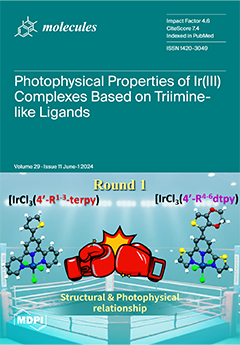Tourmaline, a boron-bearing mineral, has been extensively applied as a geothermometer, provenance indicator, and fluid-composition recorder in geological studies. In this paper, the decomposition capability of an HF-HNO
3–mannitol mixture for a tourmaline sample was investigated in detail for the first time,
[...] Read more.
Tourmaline, a boron-bearing mineral, has been extensively applied as a geothermometer, provenance indicator, and fluid-composition recorder in geological studies. In this paper, the decomposition capability of an HF-HNO
3–mannitol mixture for a tourmaline sample was investigated in detail for the first time, and a wet acid digestion method based on the boron–mannitol complex for accurate boron determination in tourmaline by inductively coupled plasma mass spectrometry (ICP-MS) was proposed. With a digestion temperature of 140 °C, tourmaline samples of 25 mg (±0.5 mg) can be completely decomposed by a ternary mixture, which consisted of 0.6 mL of HF, 0.6 mL of HNO
3, and 0.7 mL of 2% mannitol (wt.), via a continuous heating treatment of 36 h. Following gentle evaporation at 100 °C, the sample residues were re-dissolved using 2 mL of 40% HNO
3 solution (wt.) and diluted to about 2.0 × 10
5-fold by a two-step method using 2% HNO
3 solution (wt.). The boron contents in a batch of parallel tourmaline samples were then determined by ICP-MS, and results showed that the boron concentration levels were in a range of 3.20–3.44% with determination RSDs less than 4.0% (
n = 5). It was found that the boron concentrations obtained at the mass of
10B were comparable with results from the measurements at the mass of
11B. This revealed that the usage of 2% mannitol with a quantity as high as 0.7 mL in this developed approach did not exhibit significant effect on the quantification accuracy of boron at the mass of
11B. It was also found that the processes including fluoride-forming prevention and fluoride decomposition deteriorated the boron-reserving efficiency of mannitol for tourmaline, causing the averaged boron contents to vary from 2.25% to 3.57% (
n = 5). Furthermore, the stability of the boron–mannitol complex under 185 °C by applying the laboratory high pressure-closed digestion method was evaluated, which showed that there existed a 60.36% loss of boron compared to that under 140 °C by using this proposed approach. For this ternary mixture, the tourmaline decomposing efficiency was found to be weakened prominently using 100 °C as the digestion temperature, and tourmaline powders can be observed even after 72 h of continuous heating with B contents within 1.09–1.23% (
n = 5). To assess the accuracy of this developed method, the boron recovery of anhydrous lithium tetraborate was studied. It was found that the boron recoveries were within 96.59–102.12% (RSD < 1%,
n = 5), demonstrating the accuracy and reliability of this proposed method, which exhibits advantages of high B preserving efficiency, and giving concentration information of both B and trace elements simultaneously. By applying such a boron–mannitol complex-based wet acid digestion method, the chemical composition of boron and trace elements in three tourmaline samples from different pegmatites were quantified, which provided valuable information to distinguish regional deposits and the associated evolution stages.
Full article






